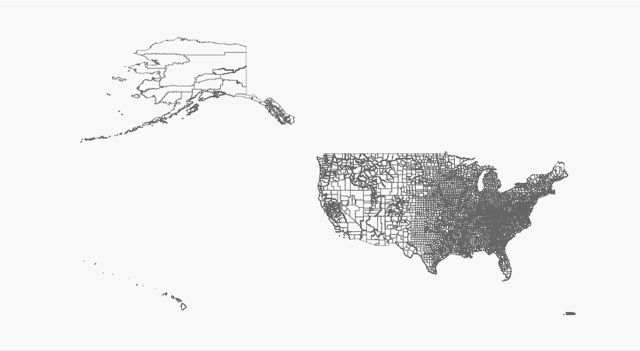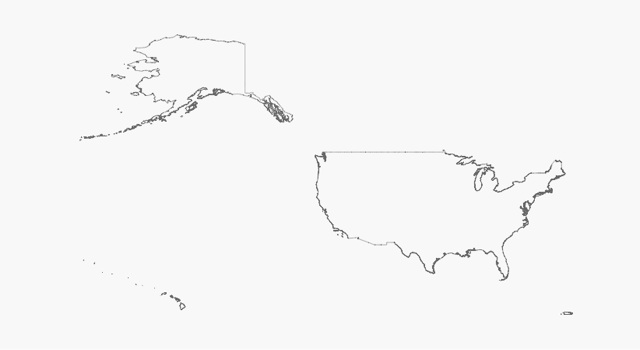I'm going to use the announcement of Nanaimo's "authentic Web" GIS as an occasion to debunk some myths about REST and the Web, and their fitness for designing alternatives to the OGC's service architecture, that surfaced on Twitter last week.
Myth: RESTful Web services aren't based on standards.
Indeed, there are APIs on the programmable web touting "REST" which are very unlike each other. Not all of them are even RESTful when you get right down to it. They come from different and varying domains. It's understandable that a quick glance leaves some with the mistaken impression that interoperability is not a property of RESTful Web services.
First, and this can't be said enough, because it still isn't really understood in the GIS community: REST is a particularly constrained style of architecture which just so happens to be the style of the World Wide Web. It is not a standard, but needs and shapes standards. Interoperability depends on standards, whether your architecture is RESTful or not. Paul Prescod, who I'm quoting often these days, enumerates the necessary kinds of standards:
In application-level networking, there are three basic things to be standardized
- Addressing -- how do we locate objects
- Methods or Verbs -- what can we ask objects to do
- Message payloads or Nouns -- what data can we pass to the objects to ask them to accomplish their goals
For RESTful Web services, the first two are standardized by HTTP/1.1:
The Hypertext Transfer Protocol (HTTP) is an application-level protocol for distributed, collaborative, hypermedia information systems. It is a generic, stateless, protocol which can be used for many tasks beyond its use for hypertext, such as name servers and distributed object management systems, through extension of its request methods, error codes and headers. A feature of HTTP is the typing and negotiation of data representation, allowing systems to be built independently of the data being transferred.
HTTP has been in use by the World-Wide Web global information initiative since 1990. This specification defines the protocol referred to as "HTTP/1.1", and is an update to RFC 2068.
You wanted standards? Even OGC service specifications acknowledge HTTP/1.1 (though not without misusing it, more on that in a future post). And HTTP/1.1 has been shaped by REST.
As Prescod points out, RESTful Web services push all interoperability problems into the third standardization category: message payload. This is a conscious decision. Interoperability may not be perfectly solvable, but you can isolate its problems, and RESTful services should do so. Do read all of Prescod's article on standardization. We spend way too much time talking about the "which" of standards in GIS without really thinking about the "what".
Myth: RESTful Web services aren't "lights out" accessible.
In fact, a properly RESTful service has better accessibility than an OGC service. To use the same analogy, what if you drop your special OGC service client in the dark and can't find it? How do you access your OGC service? Pardon me, but you're screwed: standing knee-deep in other web programming tools, and none of them can make sense of the OGC's unique addressing schemes and unique methods of interaction. With a RESTful service you can poke at it in a standardized way (HTTP/1.1 again) with curl, or XHR, or whatever, and get an actionable description. Of course, you're a GIS geek, and you keep your OGC client firmly attached to a reeling key chain, but consider the other agents on the Web that don't have an OGC service client at all. The OGC's special addressing scheme and methods make it very hard for those agents to get even a partial understanding of the service.
Myth: REST is too immature for GIS.
In 2000, Roy Fielding wrote:
Since 1994, the REST architectural style has been used to guide the design and development of the architecture for the modern Web. This chapter describes the experience and lessons learned from applying REST while authoring the Internet standards for the Hypertext Transfer Protocol (HTTP) and Uniform Resource Identifiers (URI), the two specifications that define the generic interface used by all component interactions on the Web, as well as from the deployment of these technologies in the form of the libwww-perl client library, the Apache HTTP Server Project, and other implementations of the protocol standards.
Web architecture has been done in the REST style since 1994. HTTP/1.1 began to be adopted in 1997. The Web itself goes back to 1990. The OGC's service architecture is not more mature than this.
Myth: RESTful Web services are fine for small solutions, not for large, inter-agency solutions.
The World Wide Web is our largest network application. It's global. Interoperability is promoted through the use of common hypertext formats. One would think that geographic information systems using the same architecture, in the same style, could scale equally well, right? I think the onus is instead on the naysayers to make the case that their favored architectures can scale like the Web and bridge domains like the Web.

